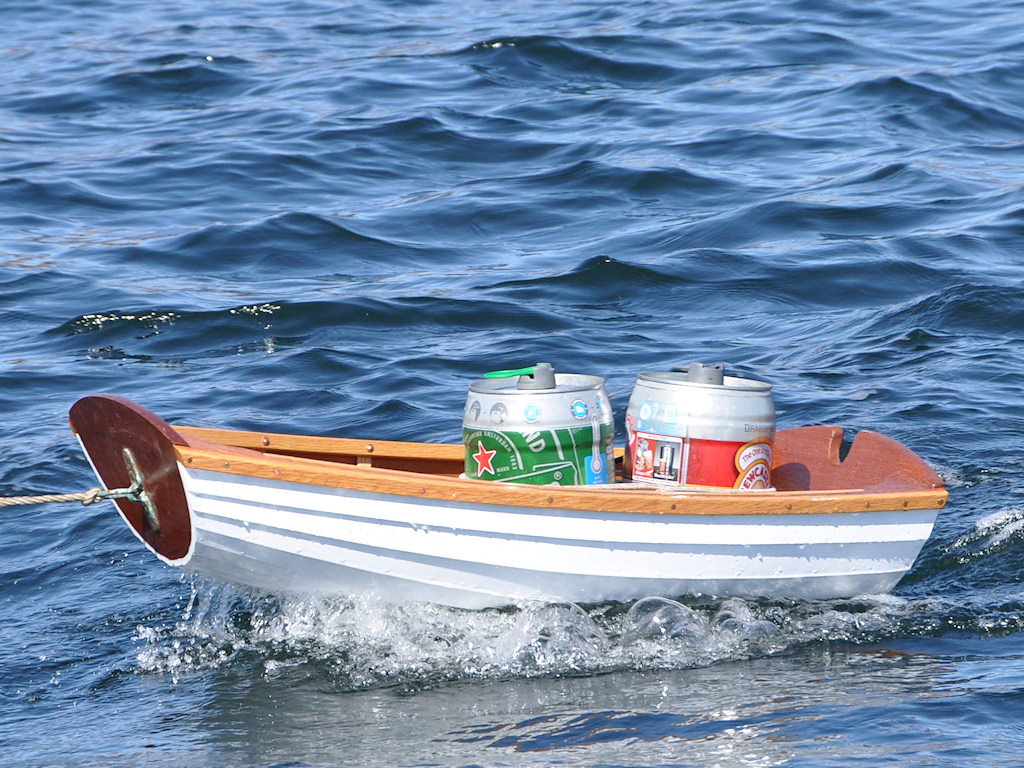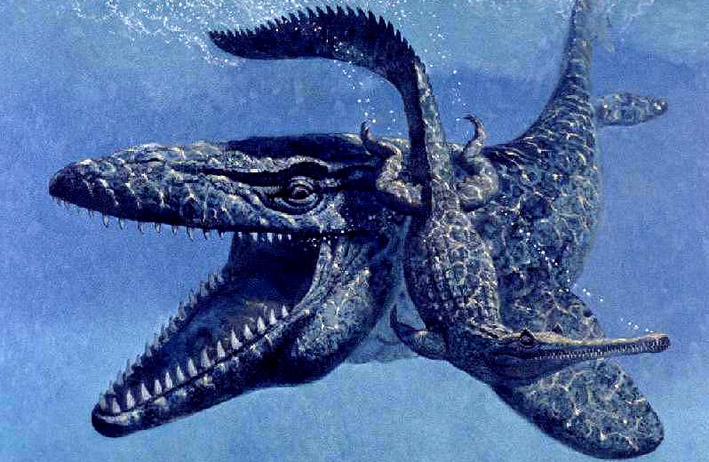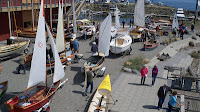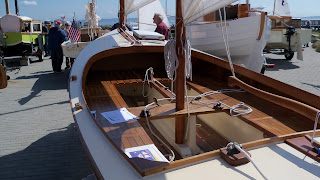With over 50 boats signed up, there was quite a variety to see. Here are some examples. My apologies for the brief descriptions and for all the ones I neglected to include.
This is Roger's restoration project, the 16' Nooka Rose featuring a 55 sq ft sprit rig. A work in progress aquired 3 years ago, Roger's objective is to simply catch up on 15 years or so of deferred maintenance, then replace the rub rails and breasthook. The boat features an experimental and interesting Cullar inspired rudder fashioned from a salvaged door, but Roger hung on to the original higher aspect rudder just in case.
This is Bob's boat "Duck", a Jim Michalak designed
Scram Pram, featuring 300 pounds of water ballast in 3 tanks which makes it very stiff in a breeze. The birdwatcher style cabin keeps the crew dry in a chop and makes the boat self righting.
Next is Michael's Iain Oughtred designed 14'-6" Whilly Boat "L' Hirondelle"
Tom's 15'-8" Jonesport Peapod has a 65 sq ft spritsail and gets its lines from Am. Small Sailing Craft. The original of this Peapod was built in 1975 in cold-molded cedar. This boat came from a mold of the original.
This is Roger's 11'-2" Joel White designed dinghy built by Roger in 2010.
This 11' 150 lb Rich Kolin designed
Heidi Skiff was built by the Northwest School of Wooden Boatbuilding.
This is Richard's "SASe", a 12'
B&B yacht Amanda. SASe stands for Solar Assisted Sail and Electric. The bimini top is actually two Solar panels that provide 45watts at 44 volts to power two torqeedo outboards and charge three 680 watt lithium ion batteries giving the boat unlimited range possibilities. The boat is also equipped with sail and oars.
A coolidge centerboard daysailor
built and for sale by the NW School of Wooden Boatbuilding.
Nik & Elizabeth's Ian Oughtred designed caledonia yawl
"Sutil" built by
Grapeview Point Boat Works in 2009. Glued lapstrake construction, sapele plywood, spruce spars, white oak floors and sales, Alaska yellow cedar floorboards and benches. Powered by oar, sail and Torqeedo electric outboard.
Chelcie's charming 11'-1" dinghy "Puff", inspired by George Holmes' 1888 Ethel from Sail and Oar, scaled down to make her a shorter and lighter boat.
Randy's Core Sound 17 should be familiar to many of you by now. Built by Jan Nikolaisen and featured in Small Craft Advisor magazine 2007-2008, issues 47, 49, 51-53.
Beautiful community-built Redfish Kayak (for sale - $5900)
John built this 17'-6" adirondack guideboat in 2009, extended from the usual 15'-16' for racing. Strip built from patterns of a design that was built by William McCaffery, a hunting guide and hotel owner during the early 1900's in the Adirondack region of upstate New York.
Happy Scampers!
Andrew's Bolger designed Bobcat "Bob's Cat", converted to a cruiser with a cabin and other modifications, recently purchased from Bob by Andrew to learn to sail.
Several others were on display on the beach and there for the Small Craft Skills Academy.
 |
| James McMullen demonstrating his new boom tent for Rowan |
The first ever Pocket Yacht Palooza was a great success and I'm sure it will become an annual event!
Update: Many more nice photos from the Palooza
can be found here.















































































